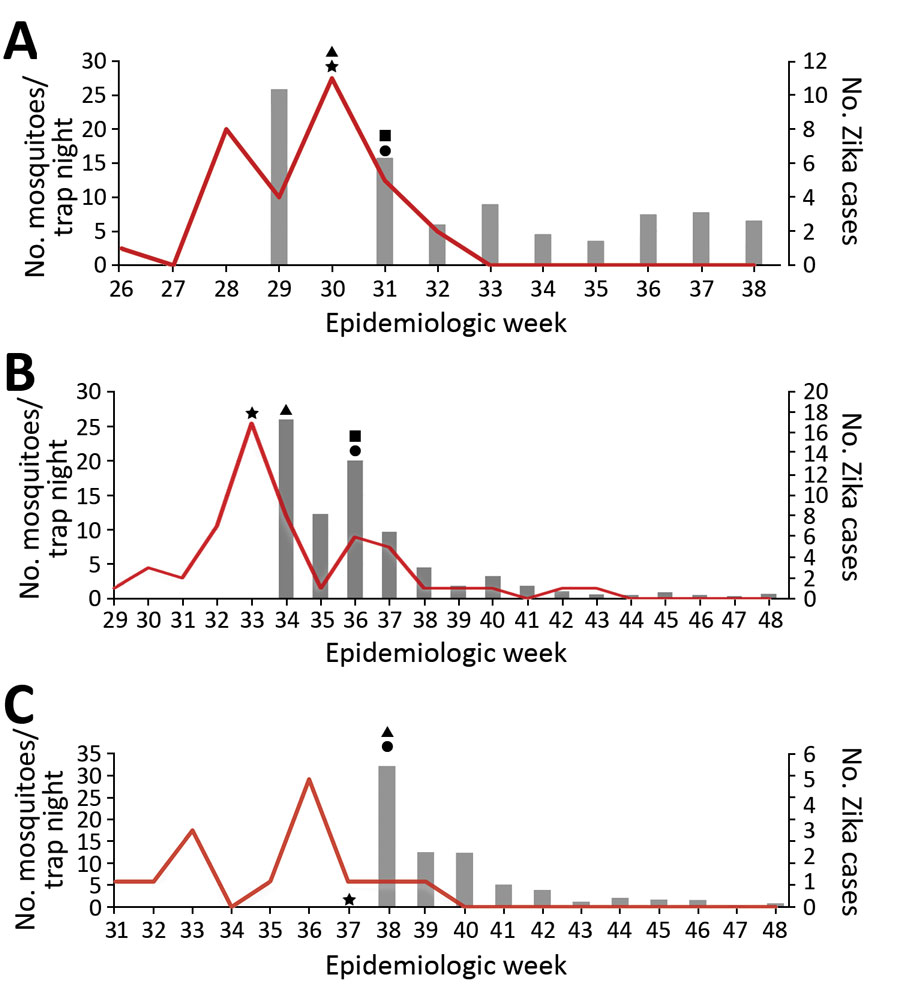Mosquito Control Activities during Local Transmission of Zika Virus, Miami-Dade County, Florida, USA, 2016
Janet C. McAllister

, Mario Porcelli, Johana M. Medina, Mark J. Delorey, C. Roxanne Connelly
1, Marvin S. Godsey, Nicholas A. Panella, Nicole Dzuris, Karen A. Boegler, Joan L. Kenney, Linda Kothera, Lucrecia Vizcaino, Audrey E. Lenhart, John-Paul Mutebi, and Chalmers Vasquez
Author affiliations: Centers for Disease Control and Prevention, Fort Collins, Colorado, USA (J.C. McAllister, M.J. Delorey, M.S. Godsey, N.A. Panella, K.A. Boegler, J.L. Kenney, L. Kothera, J.-P. Mutebi); Miami-Dade County Mosquito Control Division, Miami, Florida, USA (M. Porcelli, J.M. Medina, C. Vasquez); Florida Medical Entomology Laboratory, Vero Beach, Florida, USA (C.R. Connelly); Centers for Disease Control and Prevention, Atlanta, Georgia, USA (N. Dzuris, L. Vizcaino, A.E. Lenhart)
Main Article
Figure 4

Figure 4. Average number of Aedes aegypti mosquitoes and locally acquired Zika virus cases by epidemiologic week during the period of insecticide application, Miami-Dade County, Florida, USA, August–November 2016. A) Wynwood; B) southern Miami Beach; C) northern Miami Beach. Gray bars indicate mosquito counts; red line indicates Zika cases. Star indicates week cluster of locally acquired cases identified; square indicates first aerial adulticide application; triangle indicates first truck adulticide application; circle indicates first areawide (truck or aircraft) larvicide application. Cases are reported by date of symptom onset or date of specimen collection if no symptoms were present. Actual infection occurred before reporting date and is typically >1 week before the reporting date.
Main Article
Page created: April 15, 2020
Page updated: April 15, 2020
Page reviewed: April 15, 2020
The conclusions, findings, and opinions expressed by authors contributing to this journal do not necessarily reflect the official position of the U.S. Department of Health and Human Services, the Public Health Service, the Centers for Disease Control and Prevention, or the authors' affiliated institutions. Use of trade names is for identification only and does not imply endorsement by any of the groups named above.
